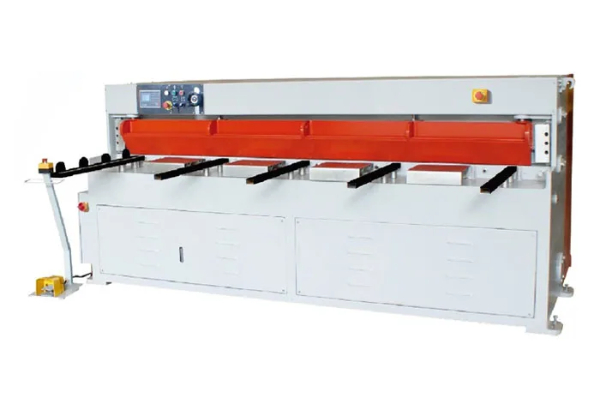
How to Choose the Right Size and Capacity for Your Press Brake
- By:Metmac
- 2024-08-12
- 142
Selecting the appropriate press brake size and capacity is crucial for efficient and effective sheet metal bending. Here’s a comprehensive guide to help you make an informed decision:
Material Thickness and Length
The thickness and length of the material being bent are primary factors. The press brake’s tonnage capacity must exceed the required bending force, which varies with material thickness and yield strength. Similarly, the machine’s working length should accommodate the longest part to be formed.
Bend Radius and Angle
The desired bend radius and angle affect the press brake’s tooling selection and tonnage requirement. A smaller bend radius requires more tonnage, while a larger angle increases the force needed. Specialized tooling may be necessary for specific radii or angles.
Production Volume and Speed
The press brake’s speed and production volume requirements are essential considerations. A higher speed machine with a larger press table and automatic material handling can increase productivity. However, these features come with a higher cost.
Shop Space and Accessibility
Consider the available shop space and accessibility when selecting the press brake size. Larger machines require more floor area and may require overhead cranes for material loading. Conversely, choosing a smaller machine may limit production capabilities.
Tooling and Accessories
The variety of tools and accessories available for the press brake can influence its versatility. Ensure that the machine can accommodate the required tooling for the desired bends and can handle specialized accessories such as backgauges or bending aids.
Cost and Budget
The size and capacity of the press brake directly impact its cost. Determine the financial limitations and select a machine that falls within the established budget. It’s also essential to consider operating costs, such as energy consumption and maintenance.
Future Expansion
Anticipate potential future expansion or changes in production requirements. A slightly larger press brake with more capacity can accommodate future growth, avoiding the need for costly upgrades.
Conclusion
Choosing the right size and capacity for your press brake requires a thorough evaluation of the specific bending requirements, production needs, shop space, and financial constraints. By considering the factors outlined above, you can make an informed decision that optimizes productivity, efficiency, and long-term value.
-
Advanced Sheet Metal Rolling, Cutting, and Folding Machines for Efficient Fabrication
2025/10/22 -
High-Precision Sheet Metal Bending and Cutting Solutions for Modern Manufacturing
2025/10/22 -
High-Precision Solutions from Leading Sheet Metal Cutting Machine Manufacturers
2025/09/11 -
Reliable Sheet Metal Equipment for Sale to Support Precision Fabrication
2025/07/17
-
Advanced Sheet Metal Rolling, Laser Cutting, and Folding Machines for Precision Fabrication
2025/10/31 -
High-Performance Sheet Metal Bending and Cutting Machines for Modern Fabrication
2025/10/31 -
High-Quality Sheet Metal Equipment for Sale: Efficient Solutions for Modern Manufacturing
2025/10/31 -
High-Performance Sheet Metal Equipment for Sale: Forming and Shearing Solutions for Modern Fabrication
2025/10/22
-
A Guide to the Latest Innovations in Sheet Metal Folding Machines
2024/11/29 -
Key Features to Consider When Investing in a Sheet Metal Folding Machine
2024/11/28 -
Enhancing Precision with Advanced Sheet Metal Folding Machines
2024/11/27 -
How to Choose the Right Sheet Metal Folding Machine for Your Workshop
2024/11/26






